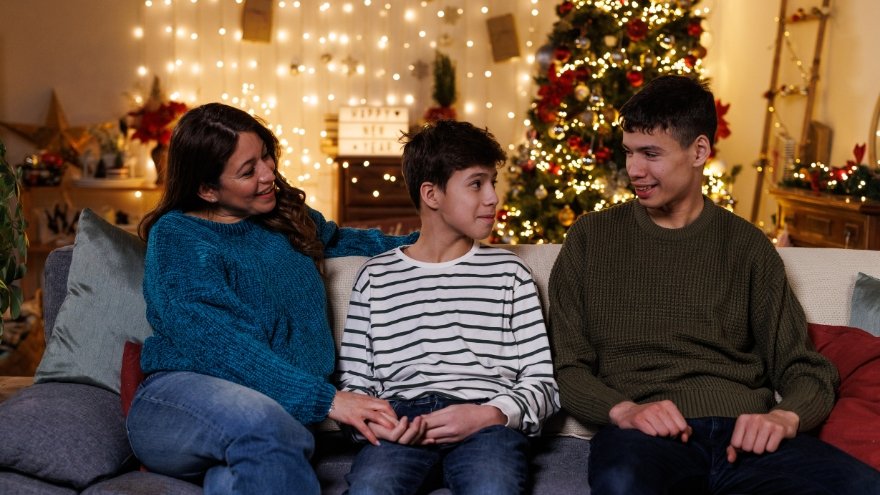
10 Facts About Seasonal Affective Disorder

Seasonal Affective Disorder (SAD) is a form of depression linked to seasonal changes. Learn to recognize the symptoms of SAD in your kids (or yourself) should they appear.
We checked in with Dr. Vanessa Slots, the Division Chief of General Pediatrics at Renown to help us understand this condition.
1. Blame SAD on the sun—or the lack of it
Seasonal Affective Disorder is a more severe form of the “winter blues. Over-sleeping, feeling irritable or unhappy, and withdrawing from people are classic symptoms of SAD. Approximately 90 percent of people with SAD experience depressive symptoms yearly in the fall and winter, while about 10 percent have depression in the spring and summer. The causes of SAD aren’t explicitly known. Still, researchers believe it’s related to a change in circadian rhythms, with differences in the amount of sunlight during different times of the year as one factor.
2. The further north you live, the more common SAD becomes
While Seasonal Affective Disorder is predominantly an adult condition, estimates are that one million children in North America have it. Interestingly, SAD does not occur in the tropics.
3. SAD is more recognizable in adults than in children
Common symptoms include feeling “empty,” pessimistic, hopeless, short-tempered, restless and not knowing what to do with oneself. Symptoms vary greatly from one individual to the next. SAD is more common in women than in men. When symptoms are severe, physical examinations are required to rule out other medical causes and determine whether antidepressant medication is needed.
4. In teenagers, symptoms tend to revolve around school-related issues
Schoolwork suffers, students have difficulty getting up in the morning and arriving late for class, homework is incomplete, and grades may plummet. Afflicted students have difficulty concentrating, remembering details and making decisions. They lose interest in activities that they previously enjoyed. Some teenagers tend to overeat, crave carbohydrates such as pasta and gain weight. Many teachers, school counselors and therapists should be more familiar with Seasonal Affective Disorder.
Pediatric Appointments

5. In younger children, symptoms are often behavior-related
They become irritable, cry more easily, are more likely to have temper tantrums and become difficult to put to sleep. Complaints of headaches and stomachaches become more frequent. Children with attention deficit issues may be more likely to experience Seasonal Affective Disorder, worsening the attention deficit issues. At all ages, symptoms of Seasonal Affective Disorder vary greatly from one individual to the next.
6. Seasonality of the symptoms helps make the diagnosis
Common symptoms begin in the late fall, become worse as the days grow shorter, peak in January or February, and wane in March and April. Symptoms may last from a few weeks to several months. Keep track of symptoms on the calendar. If they repeat next year around the same time, it helps make the diagnosis. There are no specific tests for Seasonal Affective Disorder.
7. The severity of symptoms depends on sensitivity to less light exposure
Light enters the body through the pupils of the eyes and travels via nerves to specific points in the brain. The precise mechanisms involved are complex, involving the body’s sleep/wake cycle, hormones and numerous other factors.
8. Exposure to daylight helps alleviate symptoms
Direct sunlight is best, but exposure to an overcast sky also helps. Have children walk to school and ask teachers to seat Seasonal Affective Disorder children near windows. Let them participate in outdoor winter activities after school and do their homework after dark. Around the house, keep curtains open during the day and encourage them to play near windows. Artificial tanning is not recommended for any age group.
9. SAD may help explain the popularity of winter vacations in the tropics
People who enjoy such holidays generally give “relaxation” as the main reason. But they may feel better because of longer daylight hours with plenty of sunshine. However, such cures are usually temporary. Symptoms may reappear soon after vacationers return home.
10. Use artificial light when natural light is not available or insufficient
Lighten up rooms with daylight-imitating light bulbs. Place such a light at the child’s bedside, connect it to a timer and set it for their wake-up time. Or buy a light box made for this purpose. Know how far a child should sit from the light and the safety precautions. Generally, 30 to 60 minutes of artificial light therapy daily relieves symptoms in children.
Questions to ask your doctor:
- What treatment is best?
- Do you recommend light therapy?
- What changes can I make at home to help myself and my family?
- What causes SAD?
- How long is treatment needed?
- Do you recommend counseling?
- Do you recommend dietary changes?
- Could exercise help alleviate the effects of SAD?
Related Blogs


Holiday Health for Teens
